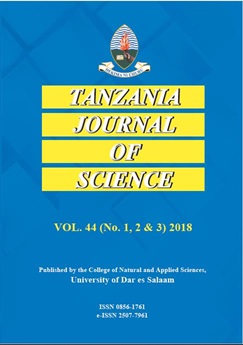Genetic Analysis Reveals Substantial Proportion of Non-targeted Tilapias among Farmed Stocks in Kilosa and Kibaha, Tanzania
Abstract
Nile tilapia farmers in Tanzania have been complaining about slow growth and low yields. Since some farmers obtain their seeds from unreliable sources, they may potentially be dealing with various non-targeted tilapias that require different environments and treatments to enhance growth and yields. Thus, this study analysed fragments (600 base pairs) of the cytochrome oxidase subunit I gene (COI) from 74 farmed tilapias in Kilosa and Kibaha, Tanzania to determine the presence of non-targeted tilapias. An additional 42 samples from the Magadu Fish Farm, Mindu dam, and Lake Victoria were included for comparison. The findings revealed that non-targeted tilapias accounted for 22.22 €“31.41% of the farmed stock, supporting the hypothesis that farmers are unknowingly dealing with a variety of non-targeted tilapias. Furthermore, pairwise FST comparison indicated genetic relatedness among the farmed fish, suggesting the sharing of fingerlings from the same broodstock or collection from the same wild locality. Therefore, farmers are advised to ensure they source seeds from certified hatcheries to minimize the risk of stocking non-targeted species. Additionally, due to the observed low genetic diversity in Kilosa samples, it is recommended that the country should establish a national breeding program for tilapia to provide farmers with access to high-quality seeds. Keywords: DNA barcoding, Unintended Cichlids, fish ponds, Gene flow, Tanganyika.
Keywords: DNA barcoding; Unintended Cichlids; fish ponds; Gene flow; Tanganyika


